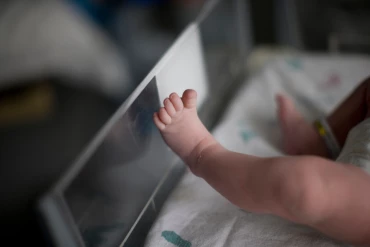Tracheostomies: Understanding Why Your Infant Needs A Breathing Tube

If your newborn needs a tracheostomy, as parents, you may be confused, concerned, and scared about why and what to do next.
Understanding why your child needs a tracheostomy performed is the first step in getting them the best care.
What Is A Tracheostomy?
Every baby has a trachea in the throat, a tube-like structure that allows air to pass through the throat to the lungs.
If there is mucus or a blockage in the tube, your infant will struggle to breathe. A tracheostomy is a surgical procedure in which a doctor places a tube down your child’s trachea, and the tube breathes for them.
During the procedure, a surgeon places a tracheostomy tube by incision into the stoma, which is the front of the neck. While it’s upsetting to think about, at a basic level, it’s a tube connected to a hole in the neck that allows safe breathing for your infant.
A tracheostomy may be permanent or temporary, depending on what your child is suffering from.
Why Would A Baby Need A Tracheostomy?
There are a few reasons your baby may need a tracheostomy, but some of the most common ones are:
- If there is a blockage in your baby’s upper airway, air can’t enter your baby’s lungs.
- If there’s any mucus in your baby’s lungs or airway that they can’t clear naturally, a tube may be needed to assist in breathing. Mucus is natural in human lungs and helps expel dust and dirt. However, if your baby can’t cough it out and too much builds up, they are more prone to infections.
- If your baby suffered brain damage during childbirth, they may struggle to breathe independently and need assistance.
There are a few reasons that upper airway obstruction may occur, either because of bilateral vocal cord paralysis, tracheal or laryngeal stenosis, infection, trauma, or because of a cyst or tumor blocking the airway.
If your child needs a tracheostomy due to trauma or infection, you may have the potential for a malpractice case.
If your baby needs long-term mechanical ventilation, it might be due to neurologic conditions or trauma. For long-term ventilation, a tracheostomy is considered safer and more comfortable than an endotracheal tube and allows the baby to breathe without a breathing tube that goes through the mouth or nose.
What Can Parents Expect After A Tracheostomy?
What happens after your child’s tracheostomy depends on how long they need the tube.
If your baby needs a tracheostomy for more than a few days, the tracheostomy tube will be changed to a new tube to prevent infections. If your infant needs the tracheostomy long-term, as the wound starts to heal, medical staff will educate you and your family on how to care for the ventilator.
How Does Medical Malpractice Happen With A Tracheostomy?
Every tracheostomy is intricate and has possible risks, especially when the procedure has to be performed on a baby. While some complications are unavoidable, others occur due to the negligence of doctors or other healthcare professionals. The most common mistakes made during pediatric tracheostomies that may be considered medical malpractice are:
- Over or under inflation
- A delay in inserting replacement breathing tubes
- Improper positioning or connection of breathing tube
- Using defective or damaged tubing equipment
- Wounding or puncturing the baby’s delicate airway tissue during the procedure
When a medical professional makes a mistake, acts (or doesn’t act) with the accepted standard of care, and the infant patient suffers harm, it may be considered medical malpractice. If that happens, the baby’s parents can seek compensation for damages.
What Are The Risks Of Tracheostomy Mistakes?
The complications of tracheostomy mistakes can be serious. Some of the risks include:
- Future heart problems
- Permanent and severe brain damage
- Increased risk of stroke
- Increased risk of infection (if airway tissue is damaged)
- Loss of consciousness
- Nerve damage
- Coma
- Death
Tracheostomy Malpractice Lawyers At Ross Feller Casey Can Help
If you feel your baby suffered injuries from medical malpractice related to a tracheostomy, contact our attorneys at Ross Feller Casey. Our Pennsylvania law firm has a national reputation for winning medical malpractice cases for families and earning record-setting recoveries to help ease the expenses and pain during this time.
We have Ivy-league-trained doctors and lawyers on our team that will help you navigate your case. We offer a free consultation and work on a contingency basis, meaning we don’t get paid unless we win. Schedule your free consultation today.
Disclaimer: Ross Feller Casey, LLP provides legal advice only after an attorney-client relationship is formed. Our website is an introduction to the firm and does not create a relationship between our attorneys and clients. An attorney-client relationship is formed only after a written agreement is signed by the client and the firm. Because every case is unique, the description of awards and summary of cases successfully handled are not intended to imply or guarantee that same success in other cases. Ross Feller Casey, LLP represents catastrophically injured persons and their families in injury and wrongful death cases, providing legal representation in Pennsylvania and New Jersey.





